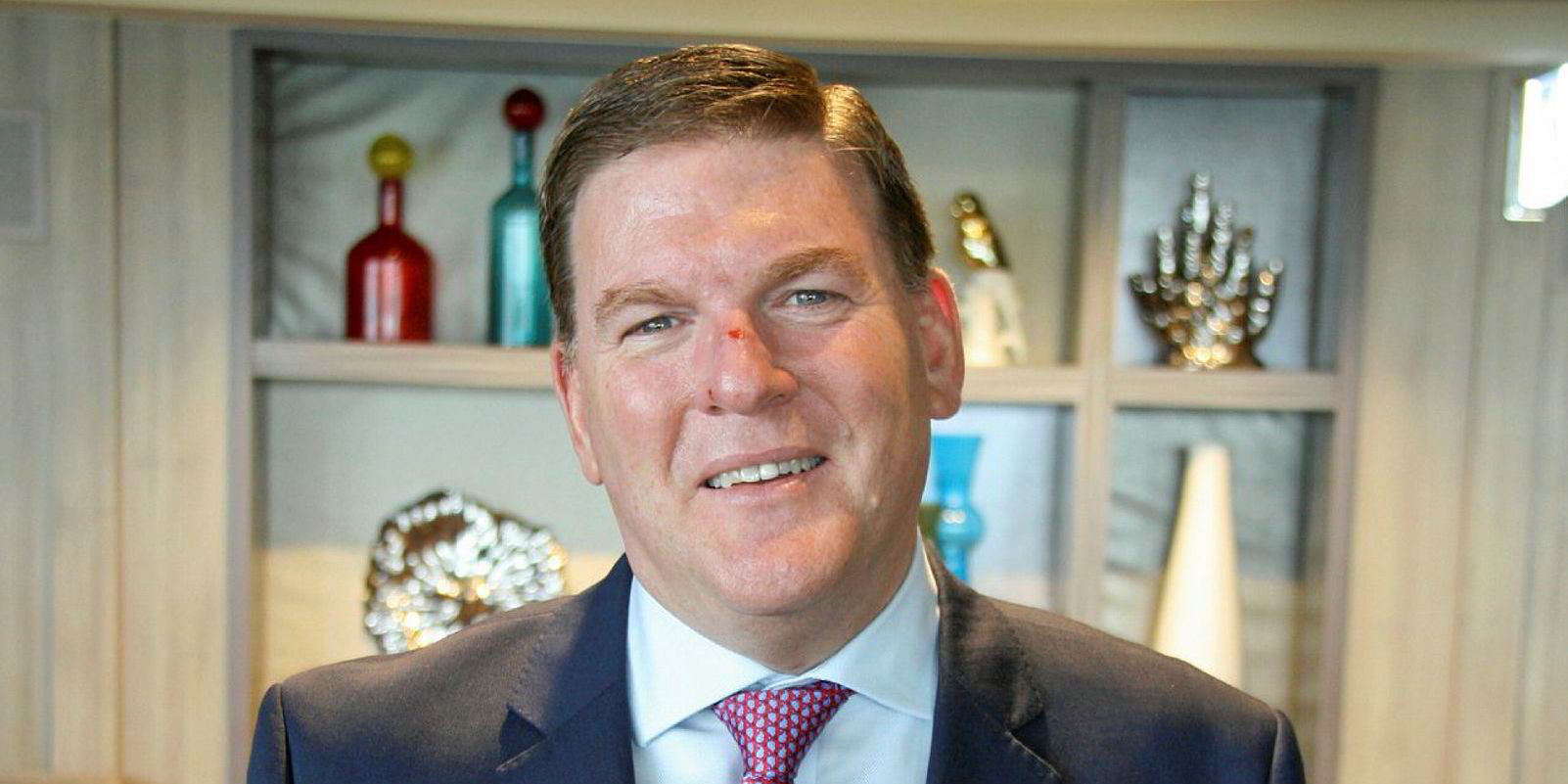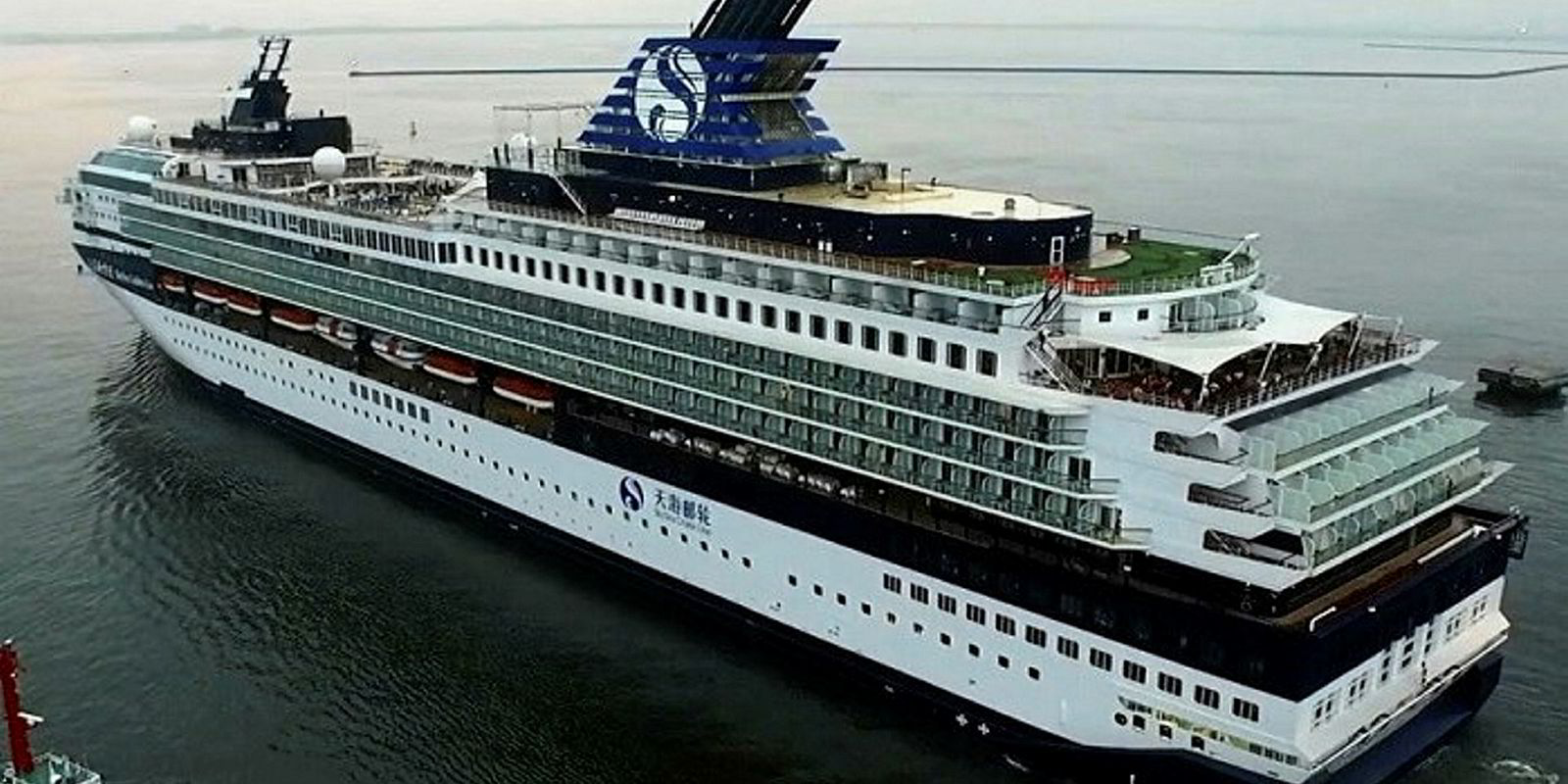Royal Caribbean International (RCI) remains optimistic about the future of the Asian cruise markets despite an industry-wide cut in Chinese capacity that some observers estimate to be in the region of 15%.
RCI president and chief executive Michael Bayley reveals that while the company is shifting some ships out of the Chinese market, it is also bringing in newer vessels.
One notable arrival will be the 167,000-gt Spectrum of the Seas, which will be delivered from Meyer Werft in 2019.
Speaking to TradeWinds onboard the company’s 168,700-gt cruiseship Ovation of the Seas (built 2016), Bayley stresses the Asian market demands the newest, biggest ships — and this will continue to be RCI’s strategy.
While the outfit is sending some of its newest vessels into Asia, they are not its biggest. It has earmarked its 168,700-gt Quantum-class ships as its Asian workhorses. These are somewhat smaller than its larger Oasis-class vessels.
The fourth in the Oasis series — the 227,600-gt Symphony of the Seas — was delivered by STX France only last week.
But is the Asian market strong enough to support the deployment of an Oasis-class vessel? Bayley concedes that their time has not yet arrived.
“Many ports in Asia are ready for an Oasis-class ship, so physically they can be accommodated,” he says. “It is more a question of the size, depth and length of the season for an Oasis-class ship — whether we can fill it year round.”
Bayley indicates that while filling such a large ship in China during the peak summer season is unlikely to be a problem, the question is what to do with it during the rest of the year.
Seasonal shifts
“The challenge is during the shoulder season,” he says. “Moving an Oasis-class from Asia [in the summer] to the Caribbean [for the winter] takes too long and is very expensive.
“It is just a question of time, and when we feel confident.”
Gavin Smith, RCI's senior vice president for international markets, tells TradeWinds that the company remains unperturbed by the slowdown of growth in the Chinese market.
“The Chinese market is normalising,” he says. “It set itself apart at first, as many markets do when they emerge.”
According to Smith, RCI regards its ships that are based in China as being nurseries for its Chinese clientele base. He notes that a significant and growing percentage of its Chinese passengers are becoming repeat customers, sailing further afield on the company’s ships based in North America and Europe.
Smith says RCI’s next goal for the Chinese and other Asian markets is to increase the length of the cruises.

“Asian passengers book late and like short cruises,” he says. “The downside of this is that we have to find two sets of passengers for each ship every week. We need to get this up to seven nights, which I think is the ideal programme. This would allow us to offer a greater variety of ports, as well as make the cruises more attractive to an international clientele.”
Smith describes RCI as being firmly established in the Chinese market, but says it has taken a lot of time and effort.
“Our product is right and the distribution network is mature,” he says. “It has taken us many years to build this. You need single-mindedness and a strong local leadership to be successful in China.”
He suggests other lines that are scaling back their presence in China perhaps did not do the necessary groundwork or did not have a clear vision about what they wanted for China.





